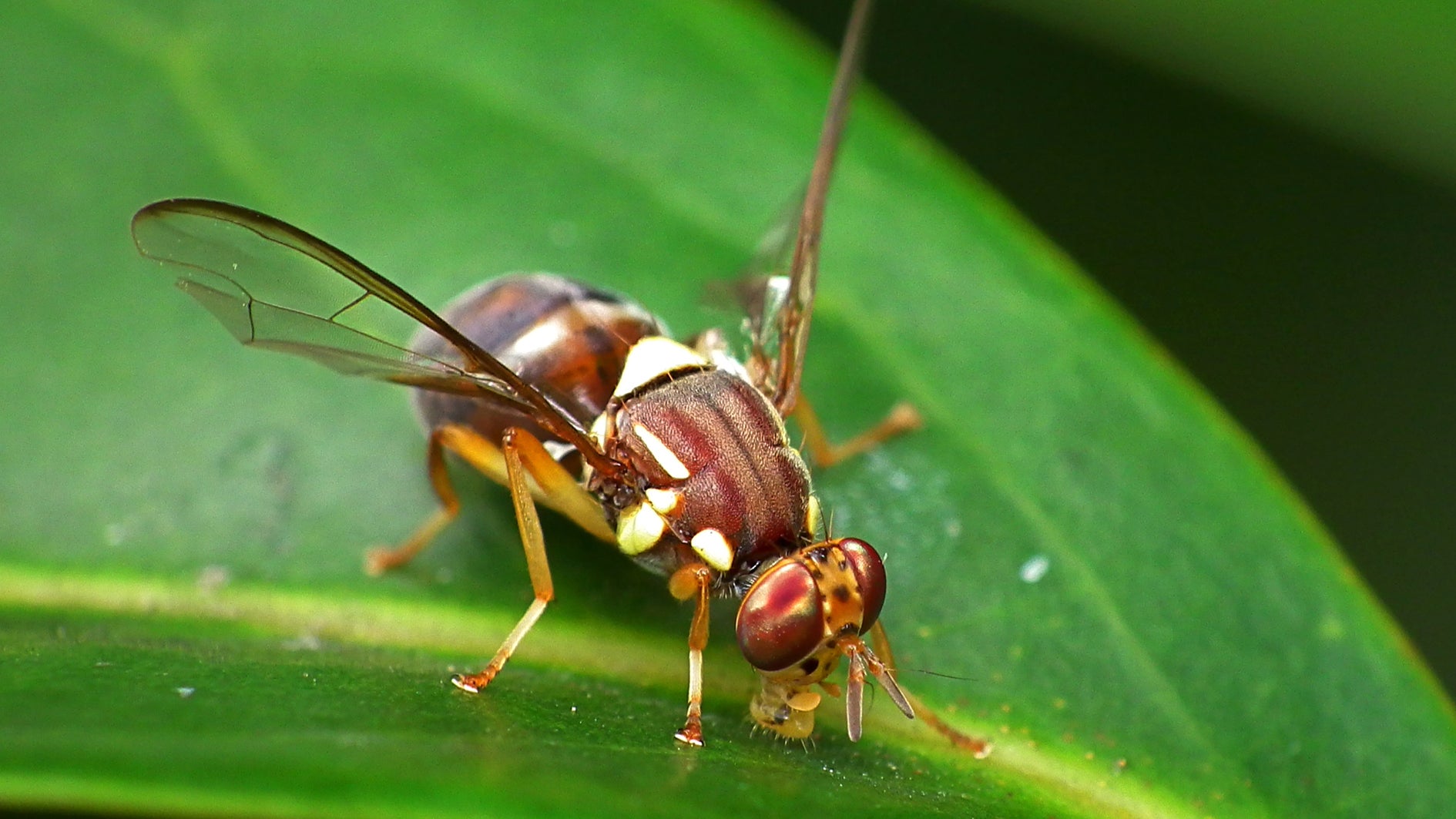
Queensland Fruit Fly
21 Sep, 2021
These flies are around 6-8mm long and lay eggs on fruit. As the maggots grow they look like a small grains of rice, found inside the fruit. Eggs can hatch as fast as two days and larval development can be finished within a five day period. Pupation occurs in the soil beneath the fruit tree they spawn from.
These flies do not breed through winter, but can live to up to a year as an adult.
Adults feed on nectar from flowers, juices of host plants and honeydew which is excreted by certain sap-sucking insects.
Risks to New Zealand
Infestations of the Queensland fruit fly spoil many of affected countries horticultural crops making them unusable and inedible. If becoming established in New Zealand, the results would be devastating to our own orchards. They are known to infect crops of feijoas, apples, stone fruit, bananas and other valuable crops. This would also affect many of New Zealand’s exports and put restrictions on trade.
Early detection can be difficult as eggs and tiny larvae can be concealed in fruit. Traps have been used for monitoring adult flies. Restriction on fruit are put in place in the event of fly detection within a certain area.
What to do
The risk of this pest entering New Zealand is still high so be vigilant in keeping an eye out for the fly. As a precaution fruit fly traps will still be maintained at older at-risk areas for a pro-longed period of time. If you are in an area where the fly has been detected, please follow MPI regulations including the restrictions on traveling with fruit.
If you spot something suspiciously like a Queensland fruit fly, take a picture and immediately contact MPI on 0800-809966.
For more information, go to the MPI website:
https://www.mpi.govt.nz/biosecurity/pests-and-diseases-we-want-to-keep-out-of-new-zealand/horticultural-pests/queensland-fruit-fly/